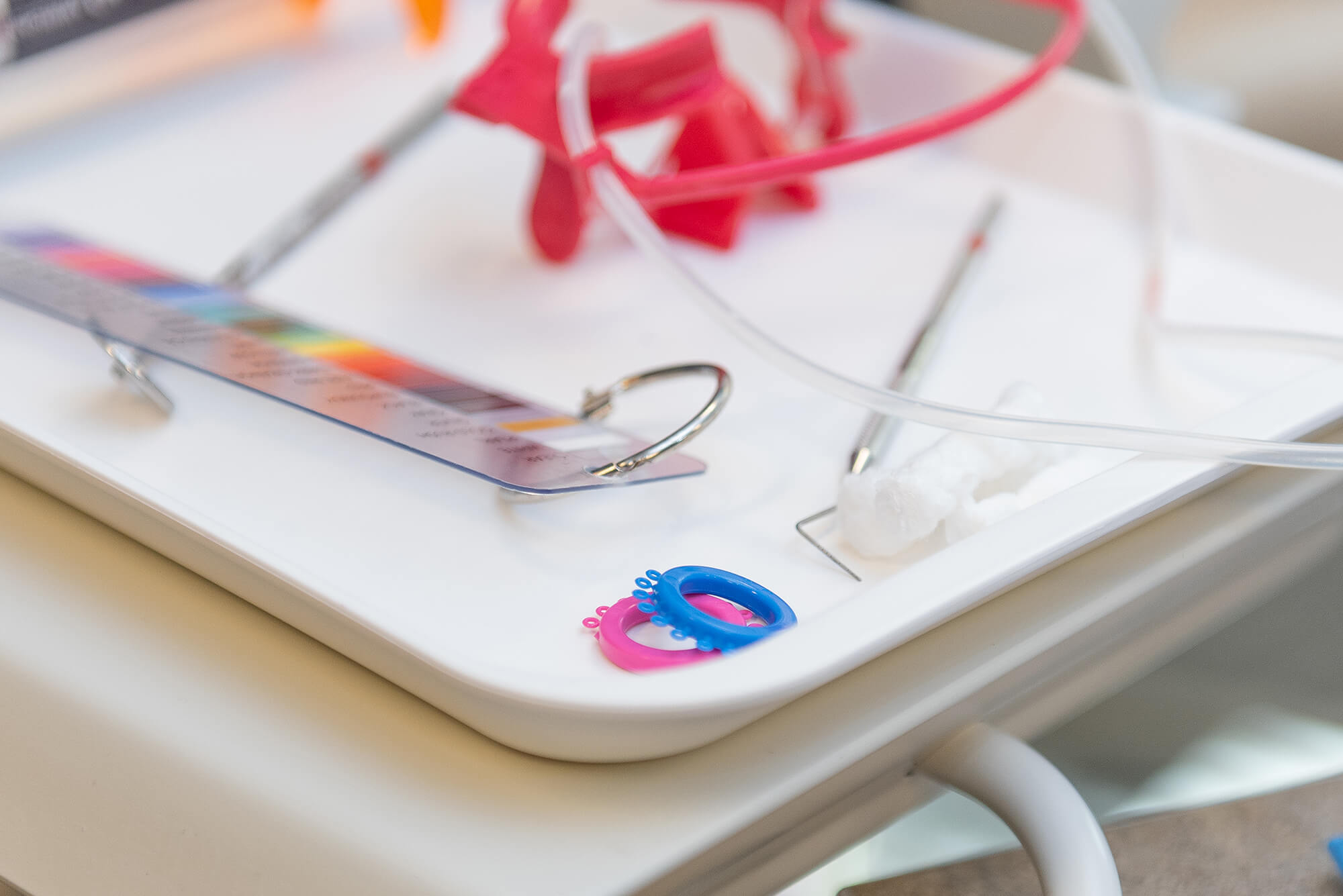Types of Braces Wire
There are several types of wire braces used in orthodontic treatment, each offering different advantages depending on the patient’s needs.
Here are the most common types:
1️⃣ Traditional Metal Braces
✔ Made from high-grade stainless steel
✔ Most durable and effective for treating complex orthodontic issues
✔ Uses metal brackets and archwires to gradually shift teeth into place
✔ Often paired with colored elastic bands for a fun, customizable look
2️⃣ Ceramic Braces (Clear Braces)
✔ Function similarly to metal braces but use tooth-colored or clear brackets
✔ Less noticeable than traditional metal braces
✔ More aesthetically pleasing but slightly less durable
✔ Ideal for older teens and adults looking for a more discreet option
3️⃣ Lingual Braces (Hidden Braces)
✔ Completely hidden behind the teeth (attached to the inner surface)
✔ Offers a discreet option for patients who want invisible treatment
✔ Custom-made for each patient
✔ May be slightly more uncomfortable initially and require longer treatment time
Which Type of Wire Braces is Best?
Each type of braces has its pros and cons. Your orthodontist will recommend the best option based on your needs, treatment goals, budget, and lifestyle.
Taking a Closer Look at Braces: The Arch Wire

When you start your orthodontic treatment plan, you’ll have a lot on your mind (like how long treatment will take or the best way to smile with braces). One thing you’ll probably want to find out about is what orthodontic materials are being used to transform your smile.
Today where’s doing to be breaking down one of the big pieces of your care: the orthodontic wire called your “arch wires.” This article from Great Smiles PD + Orthodontics will help you understand what arch wires do, how they help tooth movement, and what kind of materials the metal band can be made from.
Let’s take a peek into orthodontic wires and how braces work!
Learning All About the Arch Wire
Wearing braces means having all kinds of things attached to your teeth, like bands, brackets, and ligatures. The arch wire is one of the critical components of orthodontic care.
Arch wires are what make your teeth move. This is the rectangular or round wire that connects all your top teeth and your bottom teeth along the brackets (those pieces of metal attached cemented to the tooth).
During your treatment, the arch wires cause gentle forces that move teeth toward their final position. At your different checkups, your orthodontist will change your arch wire to adjust the tension on your teeth. This is because the necessary force to adjust your smile changes depending on the phase of treatment.
Parts of Braces: From Brackets to Bands
The orthodontic archwire couldn’t do its job without a little help from these different parts! Take a look at some different types of equipment that you’ll encounter during treatment.

- Bracket: Brackets are small rectangles that are cemented to each tooth, and they’re either made of metal or ceramic. The arch wire runs through each bracket, attaching through clips (self-ligating braces) or rubber bands.
- Molar Band: Orthodontic bands are thin metal rings that fit around the molars (your back teeth). Your orthodontist may use these to treat bigger bite problems that brackets can’t handle. A buccal tube on each band can let your doctor attach other tools to it – like lip bumpers, face bows, and the arch wire. Before you begin treatment, your orthodontist places separators between molars to create a small gap with gentle force. Separators prepare the molars for braces!
- Ligature: These are colorful (or clear), tiny rubber bands that hold archwires to the brackets. Each patient can match their elastic bands to outfits and kick their beautiful smile up a notch during treatment!
- Rubber Band: Larger elastic bands attach to the top and bottom jaw to fix overbites and underbites, applying pressure to the jaws to move them into their proper positions.
Wire Types: Stainless Steel Alloy, Beta-Titanium, & Nickel-Titanium
Arch wires come in three types of metals: stainless steel, beta-titanium, and nickel-titanium alloys.
Your orthodontist will switch between the different alloys based on what stage of treatment you are in. They’ll also change how thick the wire is as well – after all, a thin wire applies less pressure than a thick one! These mechanical properties help shape your smile better while you wear braces.
Stainless Steel Wires
With their strength, adjustability, and hygienic makeup, stainless steel archwires are a great alloy to help maintain orthodontic progress. However, they lack elasticity which means they’re not ideal for the first steps of your ortho journey.
Beta-Titanium Wires
Beta-titanium wires merge the perfect balance of strength and elasticity, making them a popular choice for orthodontists mid-treatment. More flexible than stainless steel but stronger than nickel-titanium, they’ll get you one step closer to an inspiring smile.
Nickel-Titanium Alloy
Nickel and titanium (Ni-Ti) archwires are the superhero of orthodontics, as they have a “shape memory effect” that allows them to spring back to their original form after they are shaped for your mouth. This makes Ni-Ti wires perfect for putting steady pressure on teeth during early treatment stages without compromising on flexibility.
There are many studies which look into the pros and cons of wire braces and types. The best advice we can give is to visit a local experienced orthodontist who can help you weigh the proper treatment options.


